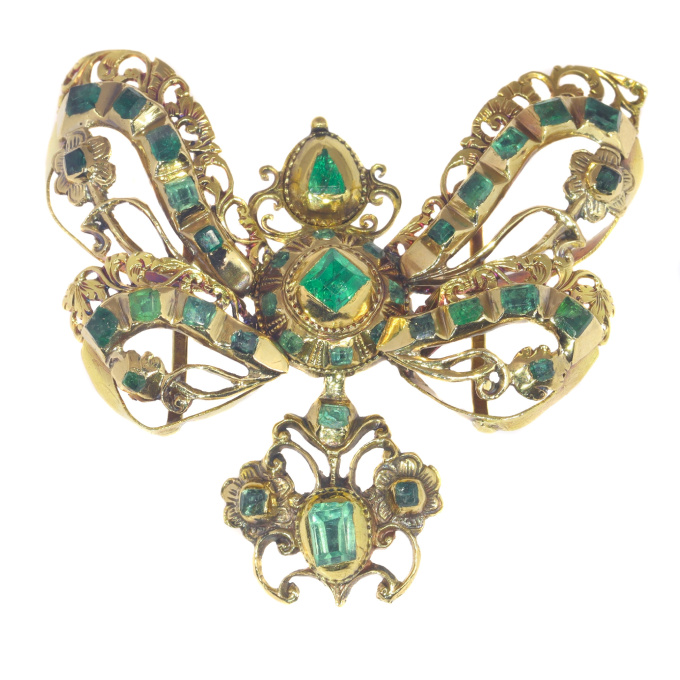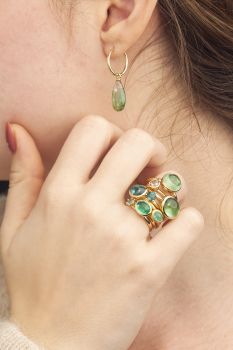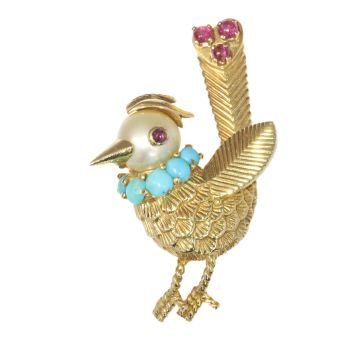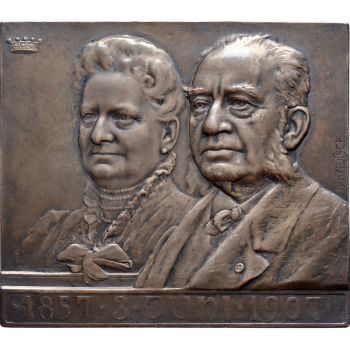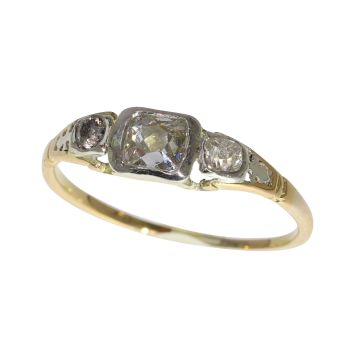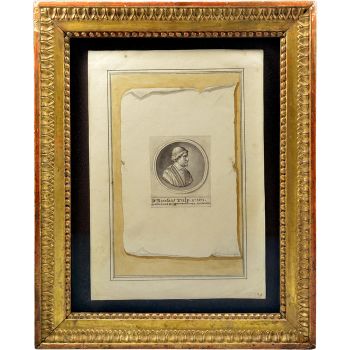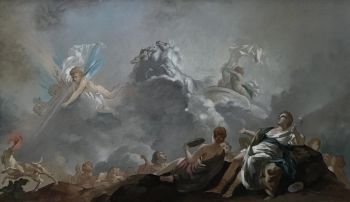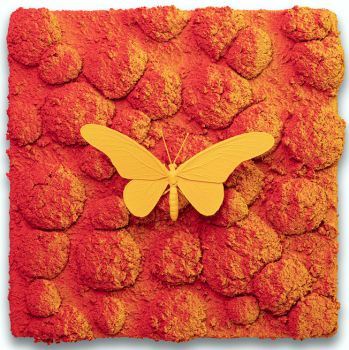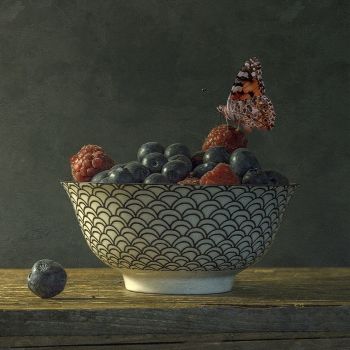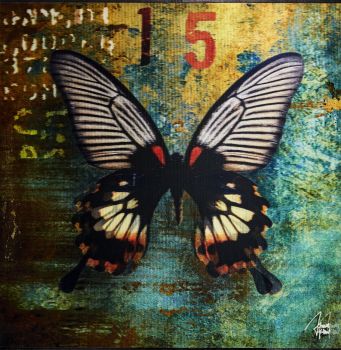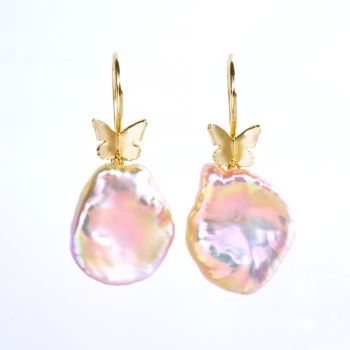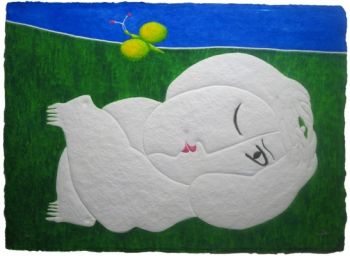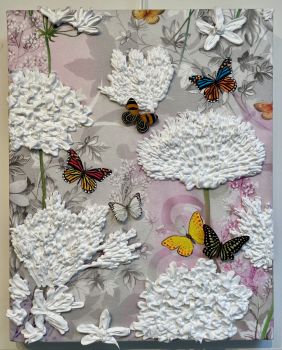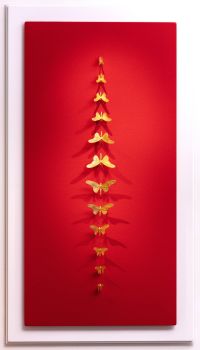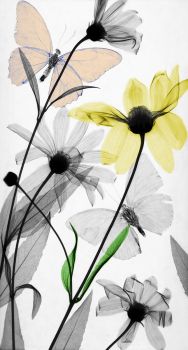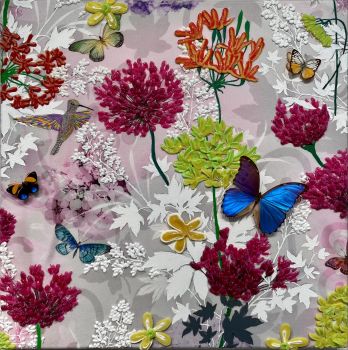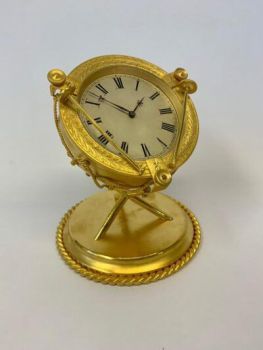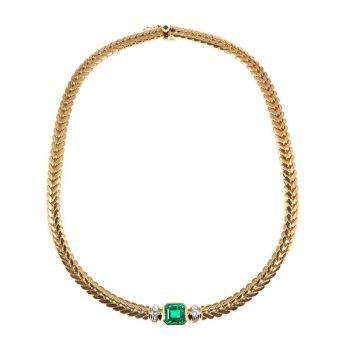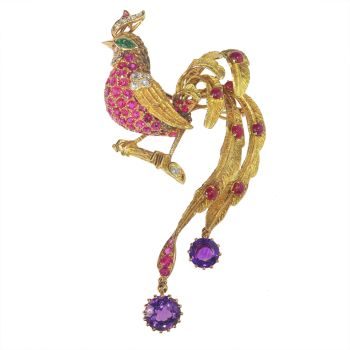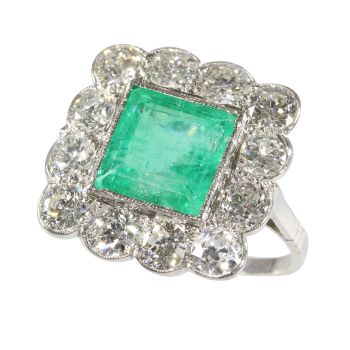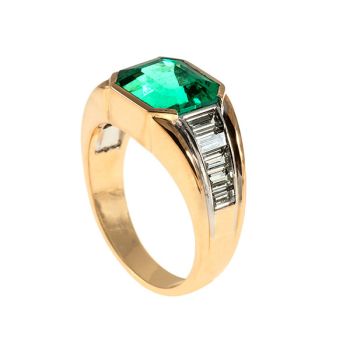Antique gold bow pendant with emeralds second half 17th Century 1650
Artiste Inconnu
émeraudeOrGemme
Actuellement indisponible via Gallerease
- Sur l'oeuvre d'art
Antique jewelry object group
bow pendant
Condition
very good condition
more info on our condition scale
Country of origin
Most likely Portuguese (but could be Spanish too)
Style
Baroque - Baroque is an artistic style prevalent from the late 16th century to the early 18th century in Europe. It is most often defined as "the dominant style of art in Europe between the Mannerist and Rococo eras, a style characterized by dynamicmovement, overt emotion and self-confident rhetoric".
See also: Baroque
more info on styles
Style specifics
Baroque is a style in art and decoration that developed shortly before 1600 and remained current in Europe until the emergence of the Rococo style c.1730. It was started in Italy, and spread to Germany, Austria, the Low Countries, and Spain andPortugal, with only a somewhat severely classical version being popular in France under Louis XIV. The style was a development of the Renaissance style and is characterized by lively, curved, and exuberant forms, by vigorous movement, and by richornament, based on classical sources, being symmetrical as distinguished from the asymmetry of the following Rococo style.
Period
ca. 1650
Events & facts of this era, poetry of this era, fashion of this era.
Source of inspiration
a fabric bow
Theme
bow
Material
18K yellow gold (touchstone tested)
more info on precious metals
Precious stones
41 emeralds
Birthstones
Emerald is the birthstone (or month stone) for May.
more info on birthstones
Hallmarks remains of a hallmark that resembles a fleur de lis (lily flower)
more info on hallmarks
Dimensions
4,30 cm (1,69 inch) x 4,00 cm (1,57 inch)
see picture with a ruler in millimeters and inches
Weight
12,10 gram (7,78 dwt)
Adin Reference Nº
22033-0106
Copyright photography
Adin, fine antique jewellery
Additional information
our latest acquisitions
jewelry glossary
wall of fame
visit us in Antwerp
subscribe to our mailinglist
- Sur l'artiste
Il peut arriver qu'un artiste ou un créateur soit inconnu.
Certaines œuvres ne doivent pas être déterminées par qui elles sont faites ou elles sont faites par (un groupe d') artisans. Les exemples sont des statues de l'Antiquité, des meubles, des miroirs ou des signatures qui ne sont pas claires ou lisibles, mais aussi certaines œuvres ne sont pas signées du tout.
Vous pouvez également trouver la description suivante :
•"Attribué à …." A leur avis probablement une oeuvre de l'artiste, au moins en partie
•« Atelier de …. ou « Atelier de » À leur avis, une œuvre exécutée dans l'atelier ou l'atelier de l'artiste, éventuellement sous sa direction
•« Cercle de… ». A leur avis une oeuvre de la période de l'artiste témoignant de son influence, étroitement associée à l'artiste mais pas forcément son élève
•« Style de … ». ou "Suiveur de ...." Selon eux, une œuvre exécutée dans le style de l'artiste mais pas nécessairement par un élève ; peut être contemporain ou presque contemporain
•« Manière de… ». A leur avis une oeuvre dans le style de l'artiste mais d'une date plus tardive
•"Après …." A leur avis une copie (quelle qu'en soit la date) d'une oeuvre de l'artiste
•« Signé… », « Daté… ». ou « Inscrit » À leur avis, l'œuvre a été signée/datée/inscrite par l'artiste. L'ajout d'un point d'interrogation indique un élément de doute
• "Avec signature ….", "Avec date ….", "Avec inscription …." ou "Porte signature/date/inscription" à leur avis la signature/date/inscription a été ajoutée par quelqu'un d'autre que l'artiste
Artwork details
Related artworks
- 1 - 4 / 12
Artiste Inconnu
Verre à boire Cristallo façon de Venise1600 - 1650
Prix sur demandePeter Korf de Gidts - Antiquairs
Artiste Inconnu
A Surinam-themed Amsterdam long-case clock1746 - 1756
Prix sur demandeZebregs & Röell - Fine Art - Antiques
 Sélectionné par
Sélectionné parGallerease Magazine
 Sélectionné par
Sélectionné parDanny Bree
1 - 4 / 24- 1 - 4 / 24
Artiste Inconnu
Engels struttclock gesigneerd H.Rodrigues 42 Piccadilly 19th century
Prix sur demandeNico van den Assem restauratie
1 - 4 / 24Jean-Claude Champagnat
French 18K gold vintage 1960's bejeweled bird of paradise brooch by Jean-Claude Champagnat1960
€ 12.500Adin Fine Antique Jewellery
 Sélectionné par
Sélectionné parDanny Bree
1 - 4 / 24

